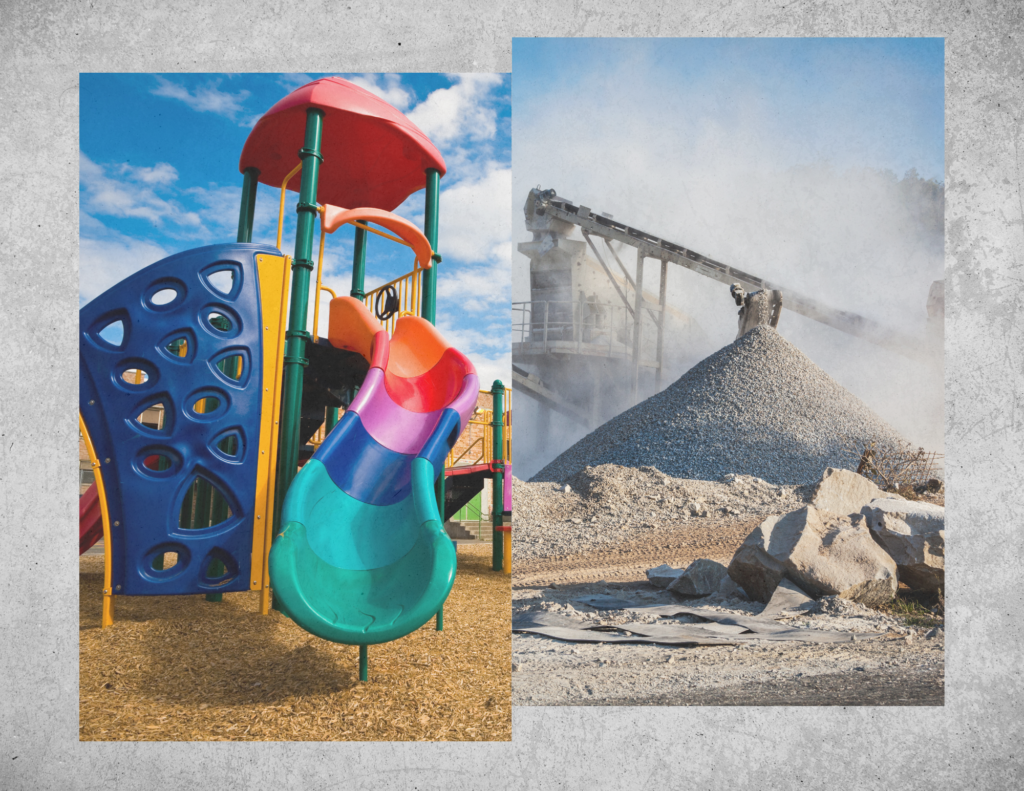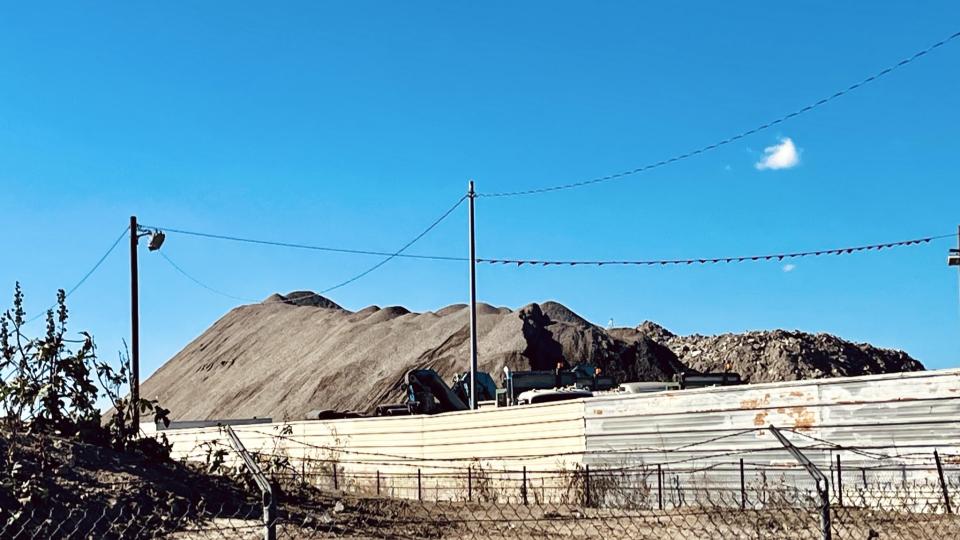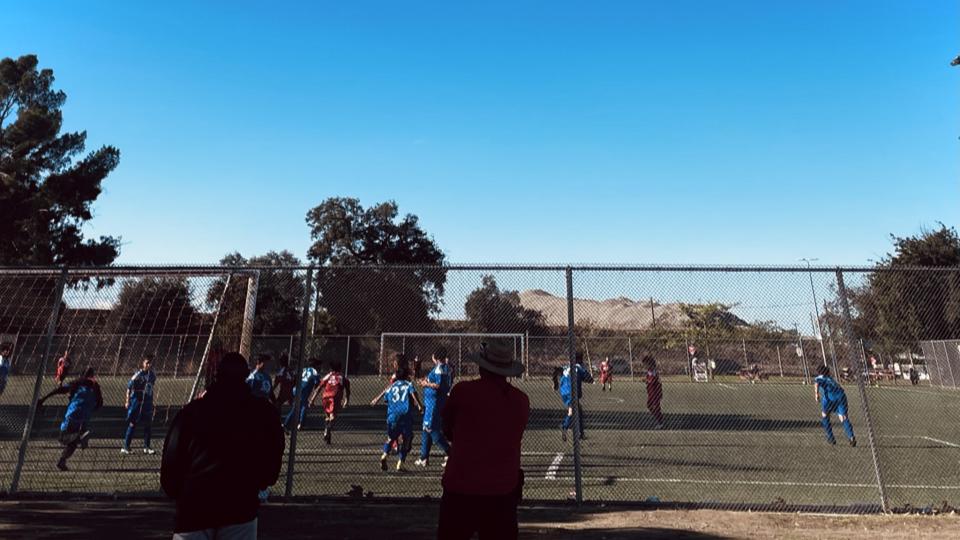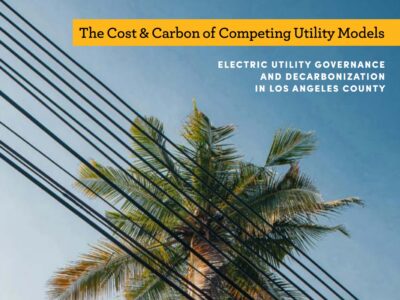New State Bill Targets Pollution from Aggregate Facilities
Guest contributors Mayahuel Hernandez and Ian Bertrando explain the air-quality benefits of SB 526, a bill they worked on with California State Sen. Caroline Menjivar.

The California Senate just took a critical step toward confronting unhealthy air quality in environmental justice communities through the introduction of a new Senate Bill 526. This proposed legislation aims to curb dangerous dust emissions from aggregate facilities in the South Coast Air Basin, where industrial pollution has long threatened public health and the environment. As students in UCLA Law’s California Environmental Legislation and Policy Clinic (Fall 2024-Spring 2025), we had the incredible opportunity to help craft this bill, working alongside Senator Caroline Menjivar’s office to devise a solution that holds facilities accountable for their harmful emissions and protects the health and safety of surrounding neighborhoods.
The development of this bill was driven by calls for action from concerned constituents in Sun Valley, a predominantly Latinx neighborhood in Senator Menjivar’s district, where residents have long endured the cumulative health and environmental impacts of pollution from a dense concentration of industrial enterprises. Due to outdated and poorly devised local zoning codes, many of these polluting operations exist just steps away from homes, schools, and parks, creating a dangerous pattern of incompatible land uses.
Among the most troubling sources of pollution in Sun Valley are aggregate facilities, such as large aggregate recyclers. These are businesses that receive and process construction debris like concrete and asphalt, grinding them into fine sand and gravel for reuse as construction materials. While recycling is important for myriad reasons, this process generates enormous open-air stockpiles of crushed material and releases significant amounts of particulate matter pollution into the air. These tiny airborne particles can penetrate deep into the lungs, causing and exacerbating respiratory diseases including asthma and chronic obstructive pulmonary disease (COPD). Children and the elderly experience some of the worst effects from this pollution; in addition to increased risk for asthma attacks and ER visits in the short-term, children exposed to particulate matter pollution can experience permanent damage to their lung function.

When we visited one of these facilities in Sun Valley, the problem was undeniable and visible from the surrounding neighborhood. Mounds of sand towered over residents’ rooftops and dominated the landscape, while a thick layer of chalky dust coated nearby streets, homes, and cars. Even on a windless day, outside of the facility’s operating hours, we could taste the grit in the air–a stark reminder of the pervasive threat these operations pose to public health.
Through extensive research and numerous meetings with key stakeholders, we began to untangle the complicated web of agencies responsible for overseeing aggregate facilities. What we found was both alarming and frustrating. A glaring regulatory gap has allowed these facilities to blanket neighborhoods from Sun Valley to Rialto and San Bernadino with particulate matter pollution for years, with little to no meaningful oversight. Although the South Coast Air Quality Management District (SCAQMD) has existing regulations intended to control fugitive dust emissions, outdated dust mitigation measures and inconsistent enforcement have left communities like Sun Valley without adequate protection. SCAQMD’s Rule 1157, “PM10 Emissions from Aggregate and Related Operations,” has not been updated since 2006 and permits aggregate facilities to maintain giant piles of crushed debris as close as 301 feet from homes without any restriction on height or size. In Sun Valley, this translates to a mountain of aggregate material several stories high just footsteps from homes and parks where children play soccer.

SB 526 directly addresses this issue by instructing SCAQMD to update Rule 1157 to more effectively monitor and reduce dust emissions. The bill mandates that the revised rule reflect new data and technology that would improve SCAQMD’s oversight of these facilities and help reduce the negative impacts of pollution in adjacent communities. Key provisions include:
-
- Stronger Dust Containment: Requiring perimeter fences to be at least six inches taller than the highest open-air storage pile of debris, helping to block wind-driven dust from escaping into residential areas.
- Limits on Stockpile Heights: Capping storage pile heights at eight feet when located near sensitive receptors such as homes, schools, or parks to minimize the negative health impacts on surrounding communities.
- Fenceline Monitoring: Mandating real-time monitoring at facility boundaries to track particulate matter pollution levels and ensure regulatory compliance.
- Enforceable Emission Thresholds: Establishing clear air quality thresholds that will require facilities to cease operations and notify the public if emissions exceed safe limits, preventing prolonged exposure to harmful fugitive dust.
- Facility Enclosure: Requiring facilities with multiple violations of emissions thresholds that are within 500 feet of sensitive receptors to fully enclose their storage piles.
These common-sense measures draw on already available technology and solutions. Limits on stockpile heights, fenceline monitoring, and emission thresholds are all elements of SCAQMD’s oversight of other types of polluting industries, for example. They provide much-needed accountability and ensure that aggregate facilities cannot continue to operate unchecked at the expense of public health and safety.
Introduction of this bill is just the first step: Now, the California Legislature will need to act. By setting enforceable limits and requiring real-time air monitoring, SB 526 represents a long-overdue step toward environmental justice for communities like Sun Valley. We look forward to this bill heading to committee after 30 days. These neighborhoods deserve freedom from harmful airborne pollution. The Legislature should demand local regulators use the tools at their disposal to protect residents.
Guest contributors Mayahuel Hernandez and Ian Bertrando are UCLA Law students (2L).






Reader Comments